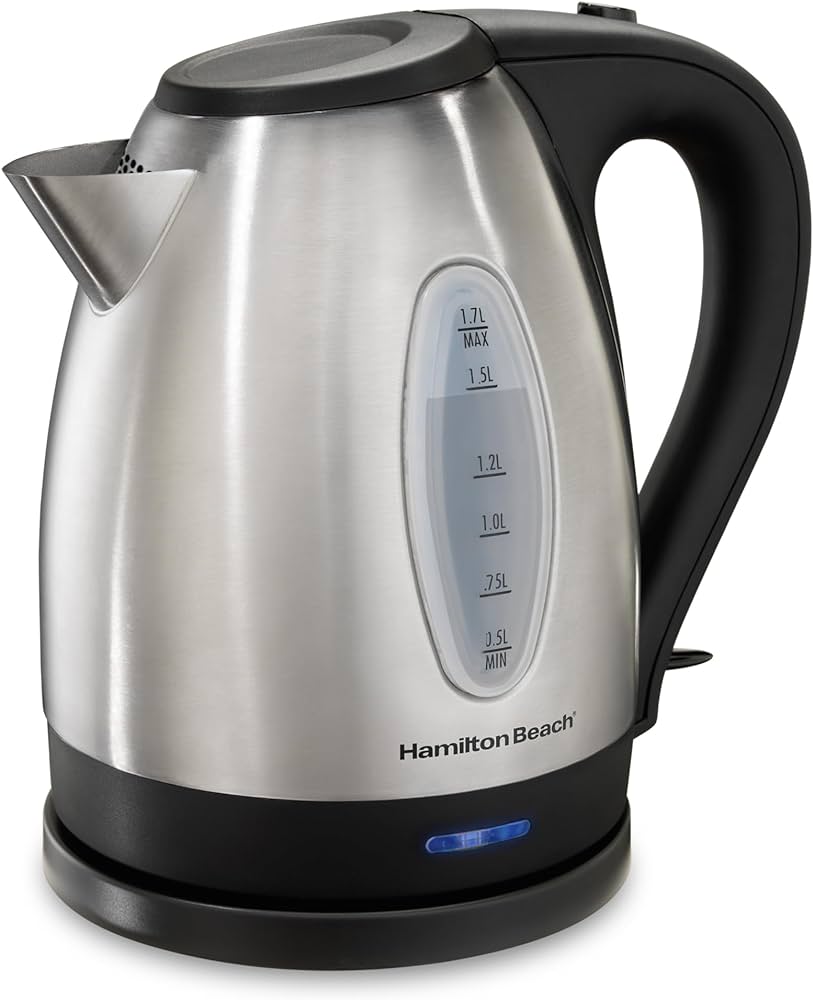The electric kettle is a convenient and ubiquitous appliance in kitchens aroun-d the world, providing a quick and efficient way to boil water for various purposes. However, like any electronic device, electric kettles may experience problems over time, ranging from minor glitches to more significant malfunctions. In such cases, understanding how to repair an electric kettle can save time and money. This guide aims to demystify the process of troubleshooting and fixing common problems associated with electric kettles, enabling users to extend the life of their appliance and enjoy a hot cup of tea or coffee without the need for immediate replacement. Whether it’s a faulty heating element, a broken switch, or other issues, this comprehensive guide will walk you through the steps needed to diagnose and address problems with your electric kettle.
Initial Checks for Repair of an Electric Kettle
Electric kettles are good for boiling water fast and safely. But sometimes they can stop working or have problems. If your electric kettle is not working well, you may need to check it before you use it. Here are some things you can do to check your electric kettle:
1. Check the cord and the plug for any damage or loose connection.
Solution: If the cord or plug is bad, you may need to get a new one or use a different socket.
2. Check the switch and the light for any malfunction or failure.
Solution: If the switch or light is not working, you may need to get a new one or call the company for help.
3. Check the water level and the filter for any improper or dirty conditions.
Solution: If the water is too low or too high, or the filter is dirty or blocked, you may need to change the water or clean the filter.
4. Check the heating element and the thermostat for any corrosion or defect.
Solution: If the heater or thermostat is bad, you may need to get a new one or call the company for help.
Does your kettle have chalky residue, odd-tasting water, or it turns on but doesn’t boil?
Sometimes you may notice that your electric kettle has some problems that affect how it works and how your water tastes. For example,
• You may see some white stuff on the inside of the kettle.
• You may taste something weird in your water.
• You may find that your kettle does not boil even when you turn it on.
These problems can be annoying and harmful, but you can fix them by doing some electric kettle repairs. Here is what causes these problems and how you can solve them:
remove limescale from the kettle
This is caused by hard water deposits, which are minerals that build up inside the kettle over time. They can affect the taste and quality of the water or the performance and lifespan of the kettle. They can also make the kettle harder to clean and more prone to rust. You can remove them by boiling vinegar or lemon juice in the kettle and then rinsing it well with clean water. This will dissolve the minerals and make the kettle shiny and clean. You should do this regularly. It’s depending on how hard your water is. You can also use a descaling agent purchased at the store, but make sure to follow the instructions carefully. This will also help to remove the hard water deposits and prevent them from forming again.
Odd tasting water
If you leave water in the kettle for too long or don’t clean it properly it could be due to bacteria or mold growth. They can cause health issues and unpleasant smells and flavors. They can also make the kettle dirty and unsafe to use. You can sanitize the kettle by boiling water with baking soda and then rinsing it well with clean water. This will kill the bacteria and mold and make the water taste better. You should do this every few weeks or maintain a routine for a clean electric kettle. You can also use a disinfectant or bleach solution, but make sure to rinse it thoroughly afterward. This will also help to sanitize the kettle and keep it germ-free.
Turns on but doesn’t boil:
This is a very common feature in the whole world. This could be due to a faulty switch, cord, plug, or heating elements, the main components that enable the kettle to heat up and turn off. They can wear out or break down over time to get damaged by power surges or spills. They can also cause safety hazards and fire risks. You can check these parts for any damage or loose connection, and replace them if needed. You may need to use a multimeter or a screwdriver to test and fix them. You can also contact the manufacturer or a professional for assistance. This will help to restore the function and efficiency of the kettle and make it safe to use.
Problem 1: electric kettle not turning on
Quick Check: It could be a power issue. Make sure your outlet works.
Fix: Try a different power outlet. Check if the plug and cord are okay. Is there a switch? Please turn it off and on.
If still stuck, it could be the kettle’s fuse or heating element. It’s best to speak with a professional then.
Problem 2: Slow Boiling
A slow kettle can be frustrating. One common reason is scale buildup.
Fix: Regular cleaning helps. Vinegar is a good cleaner. Use a mix of water and vinegar to clean it. Rinse well afterward.
Problem 3: Strange Taste or Smell
Water that tastes or smells funny is not good.
Fix: Clean your kettle. Again, vinegar and water can help kill bad smells and tastes. Make sure you rinse it well so no vinegar smell stays.
Problem 4: Kettle Leaks Water
Leaking is a no-go. It might be a crack or a seal that’s gone bad.
Fix: Check for cracks. If you find one, it’s time for a new kettle. If it’s a bad seal, you might be able to replace it.
Problem 5: Auto Shut-Off Isn’t Working
A kettle that won’t shut off is dangerous.
Fix: Unplug it. Don’t use it until it’s fixed. It could be a broken switch or a problem with the thermostat. For this, you might need a professional’s help.
Problem 6: Noisy Operation
Kettles should not be too noisy.
Fix: Some noise is normal. If it’s loud, it might be scale build-up. Cleaning can fix this. If that doesn’t help, it may be an issue with the kettle’s design.
Maintenance Tips to Avoid Problems
| Maintenance Tip | Benefit |
|---|---|
| Regular Cleaning | Prevents buildup and extends kettle life |
| Descaling | Improves efficiency, taste, and speed |
| Checking Seals and Lid | Prevents leaks and heat loss |
| Checking Electrical Components | Ensures safety and proper function |
When to Call the Pros
Some things are best left to professionals.
- If troubleshooting doesn’t work, call them.
- Strange noises or smells need a pro’s touch.
- For electrical faults, don’t try DIY fixes.

Frequently Asked Questions On Electric Kettle Woes Fixed: Quick & Efficient Solutions!
Why Is My Electric Kettle Not Working?
An electric kettle may malfunction due to a tripped thermal fuse, a faulty heating element, or a broken switch. Regular maintenance checks can preempt these issues.
Can Limescale Damage Electric Kettles?
Limescale buildup, common in areas with hard water, can impair a kettle’s heating efficiency and, over time, cause damage. Descaling regularly protects your kettle’s lifespan and functionality.
How To Descale An Electric Kettle Properly?
Describe your electric kettle by filling it with equal parts water and vinegar, boiling it, and then letting it sit for about an hour before rinsing thoroughly.
What Causes Electric Kettle Leaks?
Leaks in electric kettles often stem from loose or damaged seals or cracks in the body. Inspect your kettle regularly to identify any signs of wear and tear.
Conclusion
Using these tips will help you fix your kettle problems. Remember, safety comes first!

